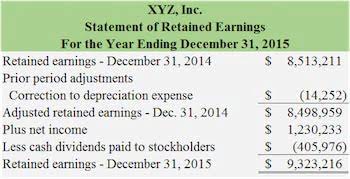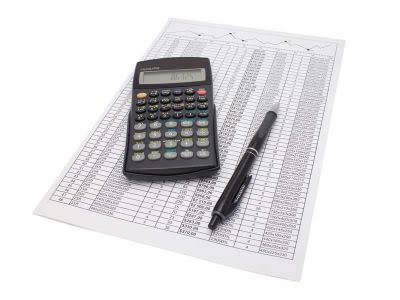Content

Because uncollectible accounts threaten your cash flow, it is important to keep an eye on them. Late payments are a scourge on small businesses, siphoning away vital cash flow that you need to keep your… Using the direct write-off method for Company B’s £625 of bad debt, you would simply list a bad debt expense transaction on your Profit and Loss statement. It https://simple-accounting.org/smart-accounting-practices-for-independent/ is reported along with other selling, general, and administrative costs. In either case, bad debt represents a reduction in net income, so in many ways, bad debt has characteristics of both an expense and a loss account. The entries to post bad debt using the direct write-off method result in a debit to ‘Bad Debt Expense’ and a credit to ‘Accounts Receivable’.

Selling goods/services and getting paid for them is at the core of any business. Yet in these troubled economic times, there is no certainty regarding when you’ll get paid by your clients. Quickbooks Online (QBO) is one of the most popular cloud-based accounting solutions on the market, and it’s… The reason for this is that it gives a more accurate picture of your financial health. Writing off these debts helps you avoid overstating your revenue, assets and any earnings from those assets.
Financial Close
The rule is that an expense must be recognized at the time a transaction occurs rather than when payment is made. The direct write-off method is therefore not the most theoretically correct way of recognizing bad debts. But this isn’t always a reliable method for predicting future bad debts, especially if you haven’t been in business very long or if one big bad debt is distorting your percentage of bad debt. If you do a lot of business on credit, you might want to account for your bad debts ahead of time using the allowance method. Like any other expense account, you can find your bad debt expenses in your general ledger. The best trade credit insurance also provides credit data and intelligence designed to help companies improve their credit-related decision making and credit management.
Based on the GAAP (Generally Accepted Account Principles), accrual accounting records transactions when they are rendered. When bad debt does occur, you can subtract it from this bad debt account to buffer your losses. Tracking it ensures that your liquidity or sustainability isn’t challenged. Discounted cash flow (DCF) is a valuation method used to estimate a company’s or investment’s intrinsic value…
How Do You Find Bad Debt Expense?
The sum of the estimated amounts for all categories yields the total estimated amount uncollectible and is the desired credit balance (the target) in the Allowance for Uncollectible Accounts. A collaborative AR tool like Versapay combines cloud-based collaboration features with what you’d expect from a first-rate accounts receivable automation solution. In addition to streamlining internal and external communications, AR teams can automate their invoicing, collections, payment processing, and cash application workflows.
- That’s why payment reminders are key in your account receivable process and especially in recognizing bad debts.
- However, this approach may result in some sales being lost, as less-perfect customers take their business to competitors that have more accommodating credit policies.
- The companies that qualify for this exemption, however, are typically small and not major participants in the credit market.
- Instead, it is an asset deducted from its accounts payable (liabilities) account.
- Accounts receivable is a permanent asset account (a balance sheet item) while sales is a revenue account (an income statement item) that resets every year.
A bad debt expense is a financial transaction that you record in your books to account for any bad debts your business has given up on collecting. It then writes off $2,000 of bad debt during the current period, and adjusts the bad debt allowance by reducing it by the amount of the bad debt expense, from $5,000 to $3,000. This can happen when a customer is unable to pay their debt, either because they are unable to pay or because they refuse to pay. In either case, the business must write off the uncollectible debt as a bad debt expense. If bad debt protection does not fit a company’s needs, there are alternatives. The best alternative to bad debt protection is trade credit insurance, which provides coverage for customer nonpayment in a wide range of circumstances.
Why Does Bad Debt Occur?
For example, a customer takes out a $15,000 car loan on August 1, 2018 and is expected to pay the amount in full before December 1, 2018. For the sake of this example, assume that there was no interest charged to the buyer because of the short-term nature or life of the loan. When the account defaults for nonpayment on December 1, the company would record the following journal entry to recognize bad debt. Let’s say What is the Difference Between Bookkeeping and Accounting your business has $450,000 in sales for the current year, and you want to know what your bad debt allowance should be. It’s almost the same formula as above, but the unknown variable has changed, and you’re calculating for the current period instead of looking at your historical averages. The idea of using the allowance method is to understand how much bad debt your business is likely to incur so you can plan ahead.
The unpaid accounts receivable is zeroed out at the end of the year by drawing down the amount in the allowance account. Every business owner knows — or should know — that there will be some customers who can’t or won’t pay their bills. Conservative accounting principles require that this unfortunate fact of business life be reflected in a company’s financial statements. This is done by reducing the allowance for bad debts by the amount of the bad debt expense that was recorded in the income statement.
